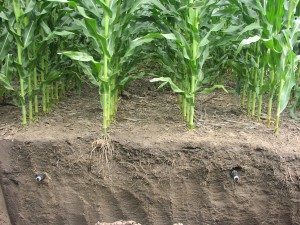AquaFlow 4.1 – Drip Irrigation Design Software
 Welcome to AquaFlow!
Welcome to AquaFlow!
AquaFlow is Toro’s FREE drip irrigation design software that provides irrigation designers with a state-of-the-art tool to configure drip irrigation systems for optimum performance.
Now available as a web application, AquaFlow can be accessed and used online or downloaded to your computer for offline use. To become a registered user, click the following link, accept the User Agreement, and fill all the fields in the Registration Form:
- AquaFlow 4.1 – Drip Irrigation Design Software (Web version)
- AquaFlow 4.1 – Drip Irrigation Design Software (Download version)
 You probably don’t expect to find much
You probably don’t expect to find much  After several years of intense and dedicated development, Toro has launched
After several years of intense and dedicated development, Toro has launched  California Utility company, PG&E, sees a big opportunity to help farmers reduce their water use and electricity use, at the same time. By doing so, it can save precious water, help farmers save money, and help the power company itself reduce overall electricity demand – which means avoiding having to build costly new power plants.
California Utility company, PG&E, sees a big opportunity to help farmers reduce their water use and electricity use, at the same time. By doing so, it can save precious water, help farmers save money, and help the power company itself reduce overall electricity demand – which means avoiding having to build costly new power plants. As California faces a historic drought, many farmers are relying on groundwater reserves to carry them through the dry season. Pumping groundwater is currently unregulated in California (that could soon change), and drawing on reserves now could cause shortages in the future. Sustainability-minded farmers are looking ahead and using an arsenal of ways to save water. Here are just a few:
As California faces a historic drought, many farmers are relying on groundwater reserves to carry them through the dry season. Pumping groundwater is currently unregulated in California (that could soon change), and drawing on reserves now could cause shortages in the future. Sustainability-minded farmers are looking ahead and using an arsenal of ways to save water. Here are just a few: Drip Irrigation has typically been used in high-value fruit, nut, and vegetable crops. Recently, it has become popular in field crop applications, including corn/soybean rotations and alfalfa, cotton, and processing tomatoes. USDA’s recent Farm and Ranch Irrigation Survey reported 3.76 million acres in the U.S. are under drip. This acreage is expected to be significantly higher in the 2013 report, which will be released this fall.
Drip Irrigation has typically been used in high-value fruit, nut, and vegetable crops. Recently, it has become popular in field crop applications, including corn/soybean rotations and alfalfa, cotton, and processing tomatoes. USDA’s recent Farm and Ranch Irrigation Survey reported 3.76 million acres in the U.S. are under drip. This acreage is expected to be significantly higher in the 2013 report, which will be released this fall.